The water heater is an essential household appliance, and you want it to function effectively. However, it may stop working for a variety of reasons. Often, you do not need to contact a professional to turn it back on. We have gathered details on how to turn on a boiler safely to help you out.
The lighting rate must not be accelerated, as this may cause an unnecessary over-strain of the boiler material due to rapid and uneven temperature rises. A series of start/stop sequences may be required to reduce the light-up rate. Follow the step-by-step guide on how to turn on the boiler.
- Turn off operating controls.
- Close the interlocks (safety controls).
- Start the fans.
- Purify the boiler.
- Activate the igniter.
- Demonstrate an ignition flame.
- Turn on the main fuel valve(s).
- Establish and monitor the fire.
- Reset ignition.
- Control the firing rate (combustion) based on demand.
Starting a boiler is not easy as pushing the "on" button. Several factors need a quick check before doing starting. Read ahead and discover how boilers should work and the measures you need to perform.
How To Start A Boiler
Close the operational switch after finishing the start-up checks, then start the first procedure. The following list suggests a usual starting order:
![gas-water-boiler-on-wall-3d, How To Turn A Boiler On [Step By Step Guide]](https://hvacseer.com/wp-content/uploads/2022/11/How-To-Turn-A-Boiler-On-Step-By-Step-Guide.png)
Turn Off Operating Controls
The operating controls regulate the boiler's temperature and pressure. Using a subtractive differential setting, you can pinpoint the burner turning back on after being shut off at the (relatively high) working reference value.
Check out this dual scale water pressure test gauge on Amazon.
Close the Interlocks (Safety Controls)
The boiler's interlock is not a sensory gadget. Instead, it defines the electrical connections within the system. It's a wiring arrangement that prevents your boiler from heating your house when it's not required.
Start The Fans
The fan in your boiler is essential because it forces dangerous gases through the flue and outside your house. The circuit board in your boiler will prevent it from operating if your fan cannot perform its function.
Purify the Boiler
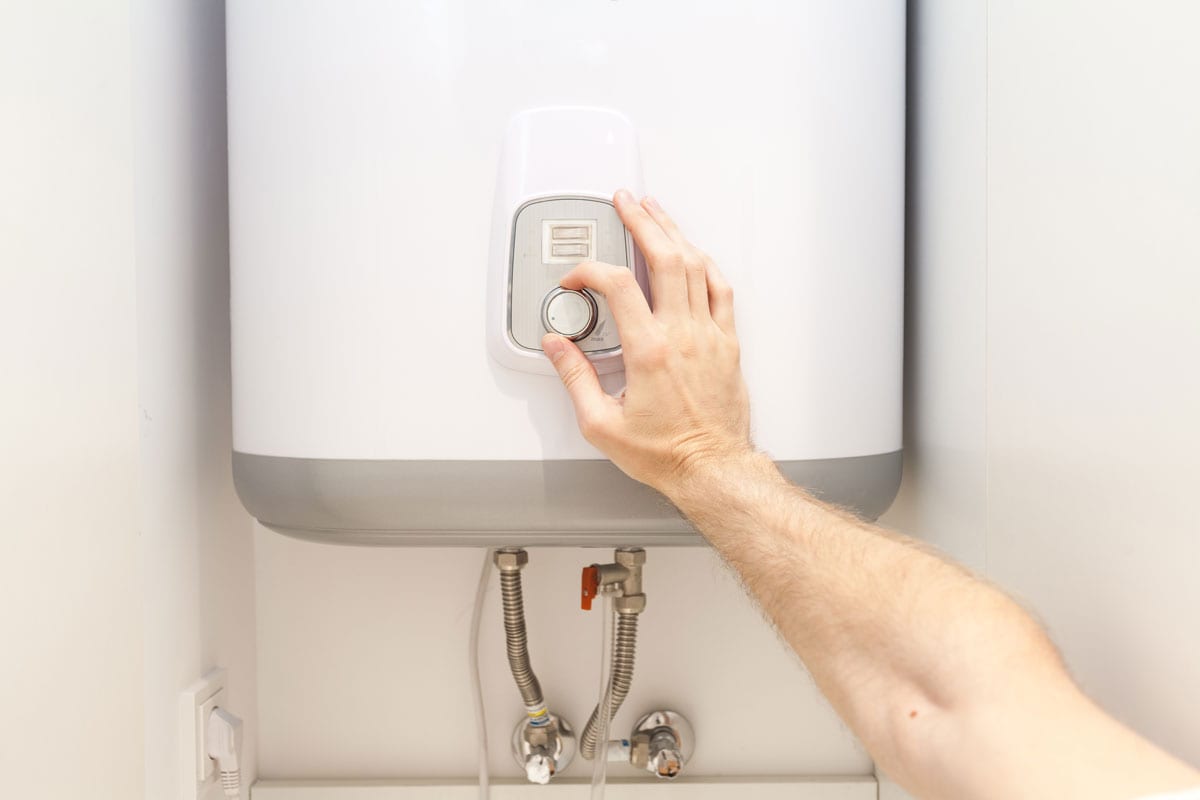
An untreated boiler may accumulate mud, silt, and bacteria which can cause foaming or deposits in the boiler. Clearing or filtration removes the majority of suspended matter.
Activate The Igniter
A furnace igniter is the component of your heater that converts fuel into heat. Your igniter starts the combustion process by lighting the burner.
Demonstrate An Ignition Flame
Press the reset switch for a minute while holding a flame to the pilot light. To reduce the chances of gas amassing again, only grasp the button after the spark plug has ignited.
Turn On The Main Fuel Valve(s)
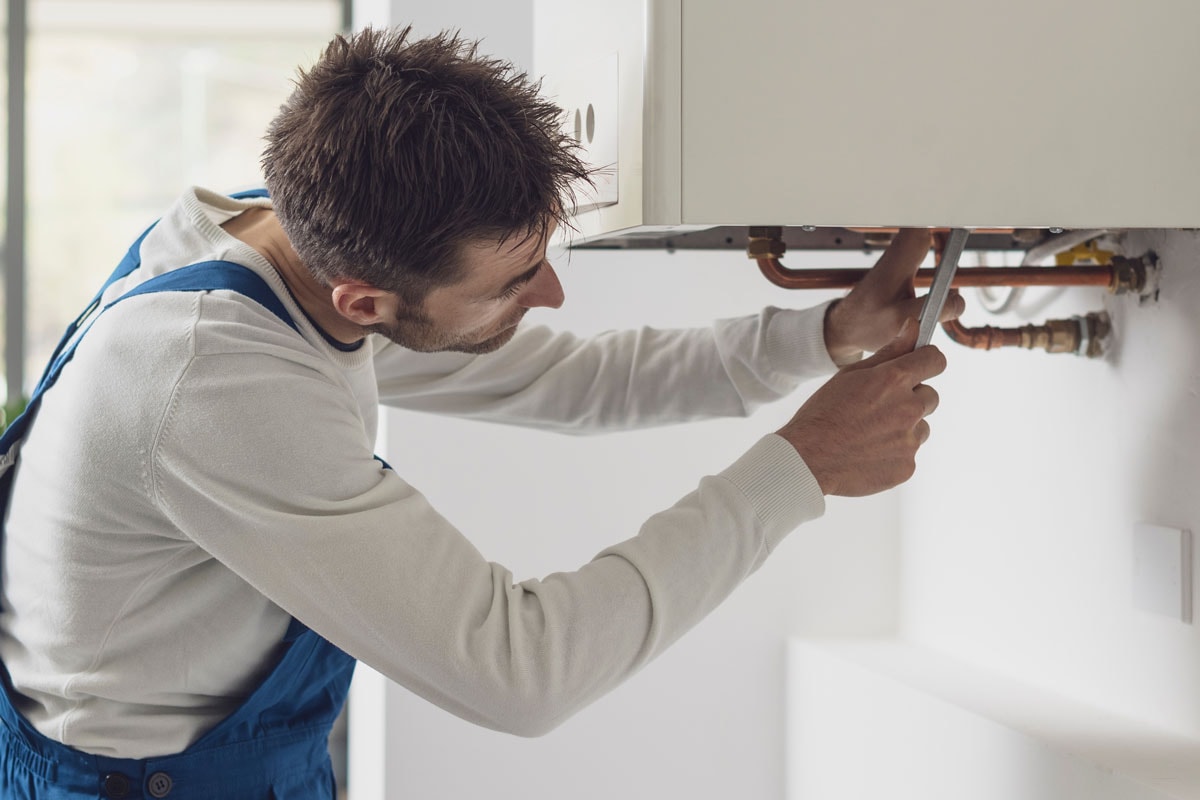
A primary steam stop valve is often connected directly to the boiler to turn off the steam from the steam distribution line. A boiler gas valve regulates the gas supply to the burner and pilot light.
Establish And Monitor The Primary Flame
Once ignited, the lighter fuel components burn as a leading flame and generate heat for the secondary flame, which burns the heavier parts. The primary and secondary air sources fuel each light separately.
Reactivate Ignition
An obstruction in a boiler system is due to excess air, which stops hot water from reaching your radiators; you can flush the radiators to expel any trapped air and reestablish proper hot water movement. This process will get rid of any extra air.
Control The Firing Rate (Combustion)
A variable-input boiler, such as a limited or modulated burner, is utilized concerning the firing-rate control. Once the burner hits the firing rate control's set point, this control will start to slow it down.
How To Perform Boiler Preventive Maintenance
You can conduct preventive maintenance on fuel-burning systems and boilers during the end of summer. Here is a recommended maintenance checklist:
- Clean and remove soot and scale from the furnaces, open all hand-holes and man-holes, and drain and flush the boiler. Check the boiler for rust and damage.
- Whenever necessary, get the boiler checked by a licensed inspector.
- Replace all hand-hole and man-hole covers, put in fresh gaskets, refuel the boiler, and run a hydrostatic test if necessary.
- Set up a proper boiler water treatment scheme to lessen corrosion and scale formation.
- Have a qualified service professional clean and tune the fuel-burning machinery.
- Check the functionality of all operating and limit controls, interlocks, and gauges.
- Have the technician disconnect the water feeding and low water cutoff devices, clean, repair, and reassemble them.
How To Shut Down The Boiler
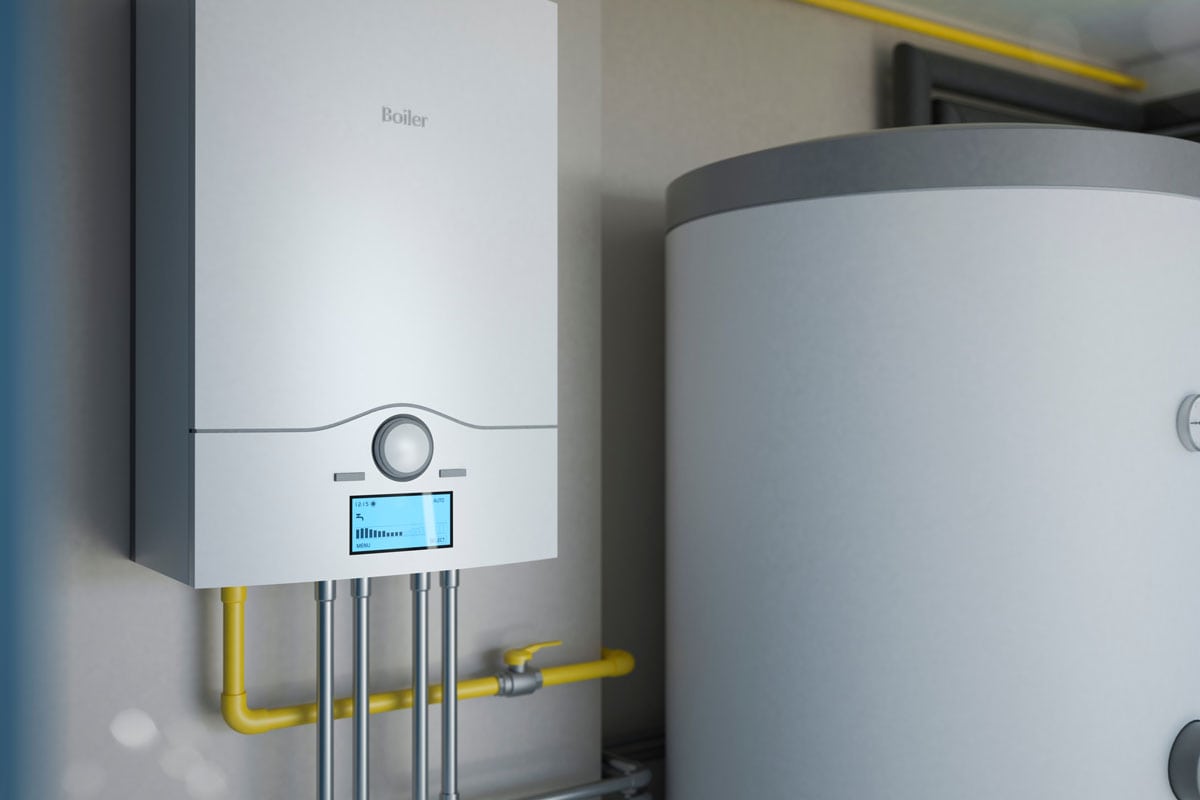
Start by turning off your boiler by lowering the load and burning rate. Then, blow out your boiler along with the controls and level columns. Here are two examples of boiler shutdowns:
Normal Shut Down
Keep the water level at its optimum level until the boiler stops producing steam. When you turn off the boiler, avoid a sudden temperature and pressure drop which could expose mountings, pipelines, and the boiler plant to unacceptable temperature gradients.
Emergency Shut Down
You need to remove the boiler from operation if some of the heating surfaces have been blazing or the boiler exhibits discernible deformations. You must call the attention of the supervising authorities.
What To Do When The Boiler Needs Repair or Inspection?
It is essential that the boiler not be used without water when the oil burner is on. As a result, the boiler will immediately stop operating. Take the steps below when the boiler is down for maintenance or inspection.
- With water, clean the boiler of soot.
- Keep the burner for at least 15 minutes to dry up any leftover water. As previously said, shut off the boiler.
- Examine the cleanliness of the pin tubes and the furnace.
- Clean and drain the boiler of any water.
- See if any lime stone appears.
- The outside fittings should be examined and cleaned. Where necessary, replace the gaskets.
- Clean the feed water lines and tank.
- The motor, pump, and fan bearings should all be cleaned and greased.
- The burner should be examined and adjusted as necessary.
How to Use Boiler Thermostats and Controls
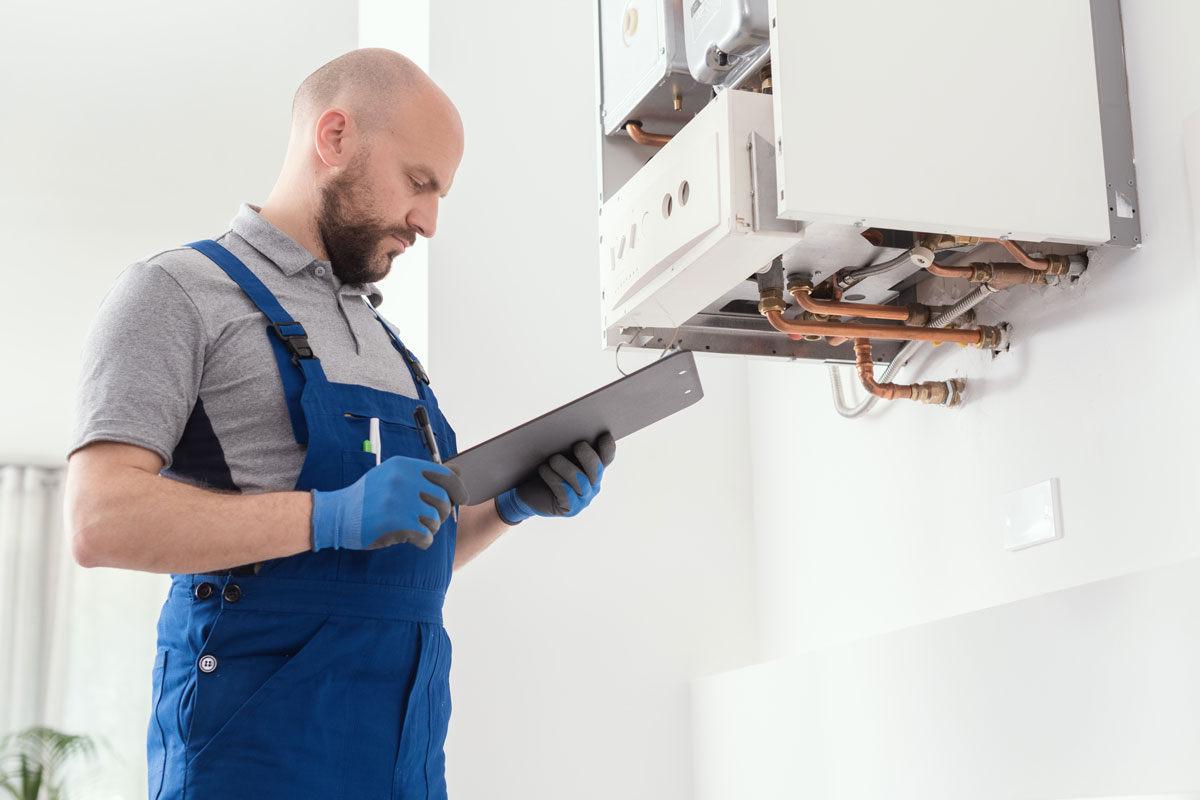
Simple controls, such as an on/off switch, are probably on your boiler. You can turn off the hot water and heating systems simultaneously or one at a time. Boiler thermostats and controllers for central heating come in different varieties, including:
Established Boiler Controls
Your boiler probably has its own set of controls on the front of the appliance, which is fantastic if your boiler is easily accessible but less so if installed in a garage, loft, or outside. It is a good idea to make the necessary adjustments for winter and summer as they will allow you to change the temperature at which the boiler boils its water.
Boiler Timers
Using a mechanical timer, you can choose when your boiler is on or off. You must install a compatible timer if you require your boiler to switch on and off at regular intervals throughout the day.
Check out this 3-prong, 2-pack mini 24-hour mechanical outlet timer on Amazon.
A Room's Thermostat
Room thermostats will activate the heating until the space reaches the desired temperature. When you attain the required temperature, the heating will be cut-off. A room thermostat is typically wall-mounted and displays the temperature using a circular dial.
Check out this manual 4 wire premium baseboard/line volt thermostat on Amazon.
Programmable Room Thermostats
Through a digital interface, a programmable thermostat lets you adjust the temperature and regulate when your heating turns on and off. Several models allow you to set programs for the weekdays and weekends individually.
Check out this 3rd generation nest programmable smart thermostat on Amazon.
Smart Thermostats
Smart thermostats provide the best level of control over your home heating system. Smart thermostats often let you schedule and manage your heating online or with a smartphone, though capabilities vary between models.
Other elements could be weather responsiveness, routine learning and adaptation, and location that can detect when no one is at home.
Check out this energy star certified Wi-Fi smart thermostat on Amazon.
Thermostatic Radiator Valve
Thermostatic radiator valves operate by limiting the flow of warm water via the radiator, reducing it when the temperature reaches a set level. Despite not directly controlling the boiler, they can help you maintain the correct temperature in your rooms.
Check out this standard thermostatic radiator valve replacement head on Amazon.
Final Takeaways
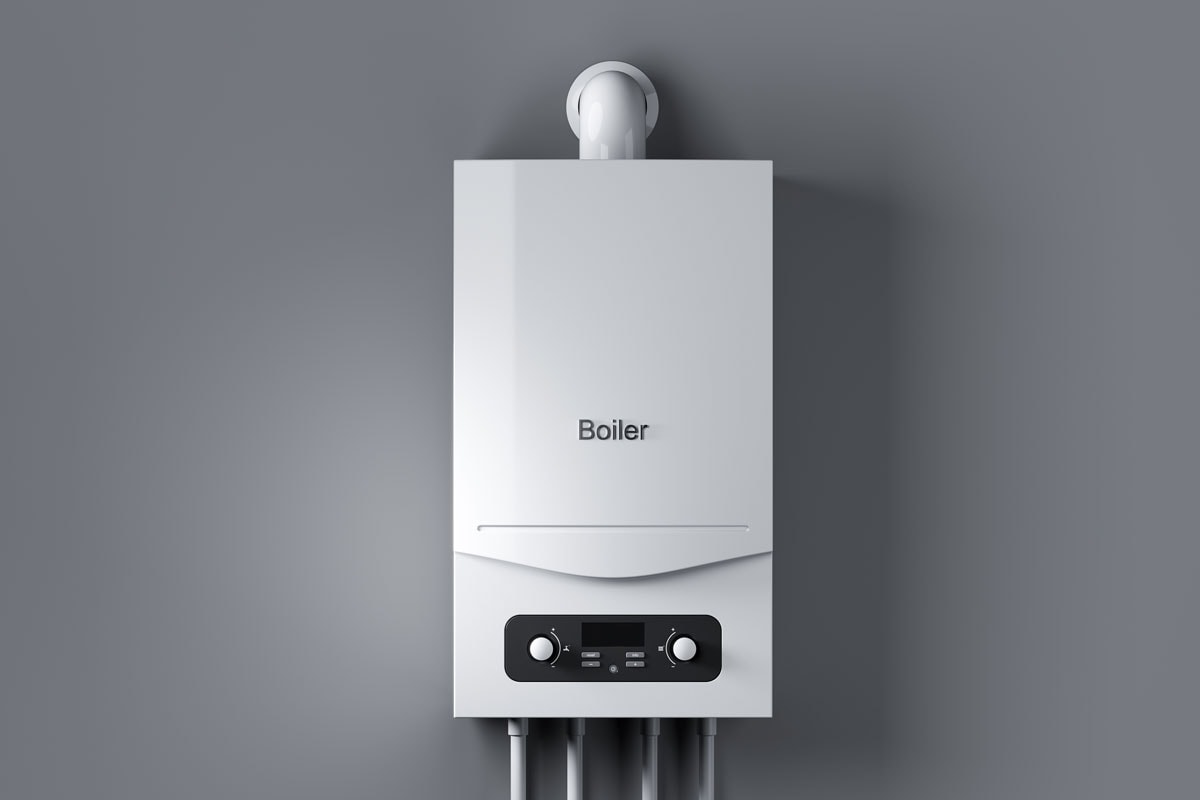
Home boilers warm up fluid to give heat during the winter. When the cold winter arrives, check for leaks and fill the water tank to have your boiler ready to run.
First, reopen any water supply valves that you had shut off so that water can fill the cistern. The next step is to restart the energy supply at the mains, and for recent electric and gas boilers, to activate the water heater and heating thermostat or to set the thermostat to the right temperature.
You can read the following connected posts if you found this one to be useful:







